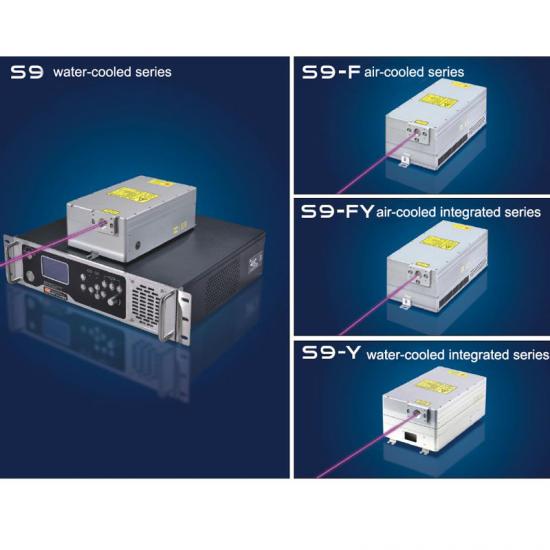Neuester Blog
Was ist der Unterschied zwischen UV-Laserlicht und gewöhnlichem Licht?
Sep 07 , 2021
Many people know the name of laser, but they don't understand laser. Today I will tell you about the four characteristics of laser compared with ordinary light.
Laser collimation, guidance and ranging are the use of this feature of good directivity.
1. Good directionality-ordinary light sources (the sun, incandescent lamps or fluorescent lamps) emit light in all directions, and the light emitting direction of the laser can be limited to less than a few milliradian solid angles, which increases the illuminance in the direction of illumination by tens of millions Times. The laser has a diffusion diameter of less than 1 meter per 200 kilometers. If it hits the moon 3.8×105 km away from the earth, the beam spreads less than 2 kilometers, while ordinary searchlights spread to tens of meters from a few kilometers away. For example, laser collimation, guidance, and ranging use the characteristic of good directivity.
Laser is the brightest light source of the time
2. High brightness ——Laser is the brightest light source in the contemporary era. Only the strong flash of the hydrogen bomb can be compared with it. The brightness of sunlight is about 1.865×109cd/m2, and the output brightness of a high-power laser can be 7 to 14 orders of magnitude higher than the brightness of sunlight. Although the total energy of the laser is not necessarily large, due to the high concentration of energy, it is easy to generate high pressure and high temperatures of tens of thousands of degrees Celsius or even millions of degrees Celsius at a tiny point. For example, practical applications such as laser drilling, cutting, welding, and laser surgery take advantage of this feature.
Good monochromaticity-light is an electromagnetic wave
3. Good monochromaticity-light is an electromagnetic wave. The color of light depends on its wavelength. The light emitted by ordinary light sources usually contains various wavelengths and is a mixture of light of various colors. Sunlight includes visible light in seven colors of red, yellow, green, cyan, blue, and purple, as well as invisible light such as infrared light and ultraviolet light. The wavelength of a certain laser is only concentrated in a very narrow spectral band or frequency range. For example, the wavelength of a HeNe laser is 632.8 nanometers, and its wavelength range is less than one ten-thousandth of a nanometer. For example, the good monochromaticity of laser provides an extremely advantageous means for precision instruments to measure and stimulate certain chemical reactions and other scientific experiments.
Interferenz ist ein Attribut des Wellenphänomens
4. Gute Kohärenz – Interferenz ist ein Attribut des Wellenphänomens. Basierend auf den Eigenschaften hoher Richtwirkung und hoher Monochromatizität von Laserlicht wird es zwangsläufig Licht mit ausgezeichneter Kohärenz sein. Diese Eigenschaft des Lasers macht die Holographie Wirklichkeit.

UV-Laser | grüner Laser | UV-Laser | UV-DPSS-Laser | Nanosekundenlaser | UV-Laserquelle | Festkörperlaser
Lasertechnologie
Die sogenannte Lasertechnologie ist der allgemeine Begriff für die Erforschung und Entwicklung verschiedener Verfahren zur Erzeugung von Laserlicht und die Erforschung und Anwendung dieser Eigenschaften des Laserlichts zum Wohle der Menschheit.
Seit mehr als 50 Jahren entwickeln sich Lasertechnologie und -anwendungen rasant und wurden mit mehreren Disziplinen kombiniert, um mehrere Bereiche der Anwendungstechnologie zu bilden, wie z Holographietechnologie, Laserspektrumanalysetechnologie, nichtlineare Optik, ultraschnelle Laser, Laserchemie, Quantenoptik, Lidar, Laserführung, Laserisotopentrennung, lasersteuerbare Kernfusion, Laserwaffen usw. Das Aufkommen dieser sich überschneidenden Technologien und neuer Disziplinen hat dazu geführt Laser spielen in vielen Bereichen wie Information, Holographie und medizinische Behandlung eine entscheidende Rolle und haben die Entwicklung traditioneller und aufstrebender Industrien stark vorangetrieben.